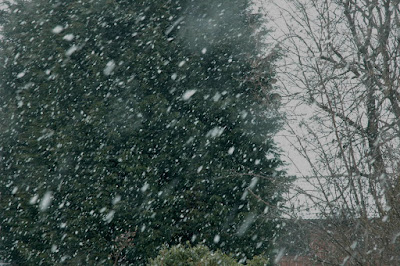Having been brought up with a bucket by the back door for peelings, teabags and the like, I have been composting as long as I have been gardening. It's amazing how much it reduces your back bag count if you eat a reasonable amount of fruit and veg (or drink copious amounts of tea or coffee - but more of those valuable coffee grounds later). For the past few years I have used a sorting bin in the kitchen and dedicate a section of that to composting scraps - much to the confusion of all visitors who contemplate the sections in mild confusion and fear.

I'm a bit more cautious about a bin by the back door than I once was, having had close and unneighbourly relations with rats, and now take things straight from the house to the black plastic daleks that lurk behind a screen of bushes.
Before the cats arrived, I would occasionally find a furry friend disappearing, bottom up, scaly worm tail aloft, down the side of the outside compost bin when I lifted the lid off. I never compost cooked waste or citrus as this is supposed to attract them, but still they came. Seriously wondered about stopping for a while, but visits from the rat man and his evil pellets seemed to do the trick in getting rid. And then we got cats. Don't see any but the odd corpse 'gift' these days so despite my wingeing about squashed seeds, the feline side of the family do have their benefits.
 |
| On guard |
The infant school where I garden has just acquired a plastic compost bin in order for the children to compost all their fruit leftovers at break time, and the kitchen staff are encouraged to add the salad and veg peelings as well. A great idea, but without a balance of materials, they'll just have a bin of putrid slime oozing on the playground!
If you want to compost, make sure you put a balanced mixture of materials in your bin - it needs to have brown, woody material which doesn't just collapse so that air is kept in the system. I did my bit by adding a lot of dried perennial plant stalks in my tidying activities yesterday, and these, chopped up a bit with a spade or secateurs are ideal. Softer plant waste and kitchen peelings are great for adding moisture and helping to generate a bit of decomposition and warmth. Grass clippings are good in moderation, but need to be mixed with drier stuff like leaves to stop them forming a slimy, smelly slab in your bin. I also add all my shredded office paper - would like to see anyone try to reconstitute my bank statements from the gooey mass of worms and woodlice! I usually keep a pile of dry material at the side of my bin so that I can add it in alternate layers when I put the kitchen waste into it.


The school bin is currently situated on the tarmac playground, which is not really ideal as no worms or insect life will scramble in from the soil and set to work in digesting and decomposing the waste. The bin is, however, on a mild slope near a drain, so at least any run off will be cleared.
To encourage the start of the composting process, I'm going to donate half a bucket of stuff from my own bin, in order to introduce some of the many brandling worms which line the lid on warmer days. I did suggest getting some of the kids to wee in the bin as this is said to be a good starter too - though perching on it might contravene all health and safety rules!
The next bit of good news I need to give them is that they could really do with more than one bin - not just because the size of the garden can generate enough waste to fill it four times over, but because in order to encourage the composting process, the material it contains does need to be mixed and turned every now and then. I don't understand why manufacturers of bins put in those flappy doors at the bottom as you can't really use them to get compost out as it gets quite compressed during the process - what you need to do every few months (or when the bin gets quite full) is fork the contents of the full bin into an empty one. Just lifting it out and shaking it in gets more air into the mixture and distributes all the beasties through the heap, getting them to work on fresh bits. Once you've turfed it all into the new bin, put a lid on, don't keep adding to it and leave it to rot down into crumbly black marvellousness. Start a new heap in your now empty bin and by the time that one is full, the undisturbed one will usually have produced well rotted, earthy smelling compost which is ready to use on the garden.
As for the coffee grounds I mentioned earlier, until last week I always chucked them into the compost, but am now saving them separately, to use as slug barriers around mollusc-susceptible plants. Will let you know if it works.





























